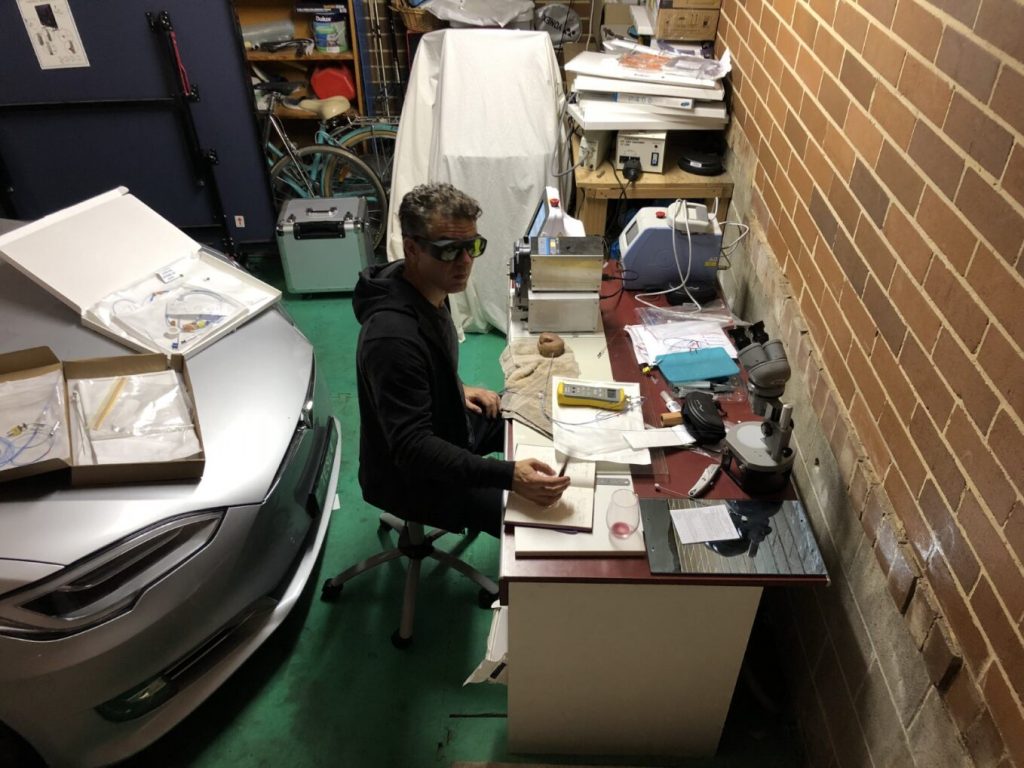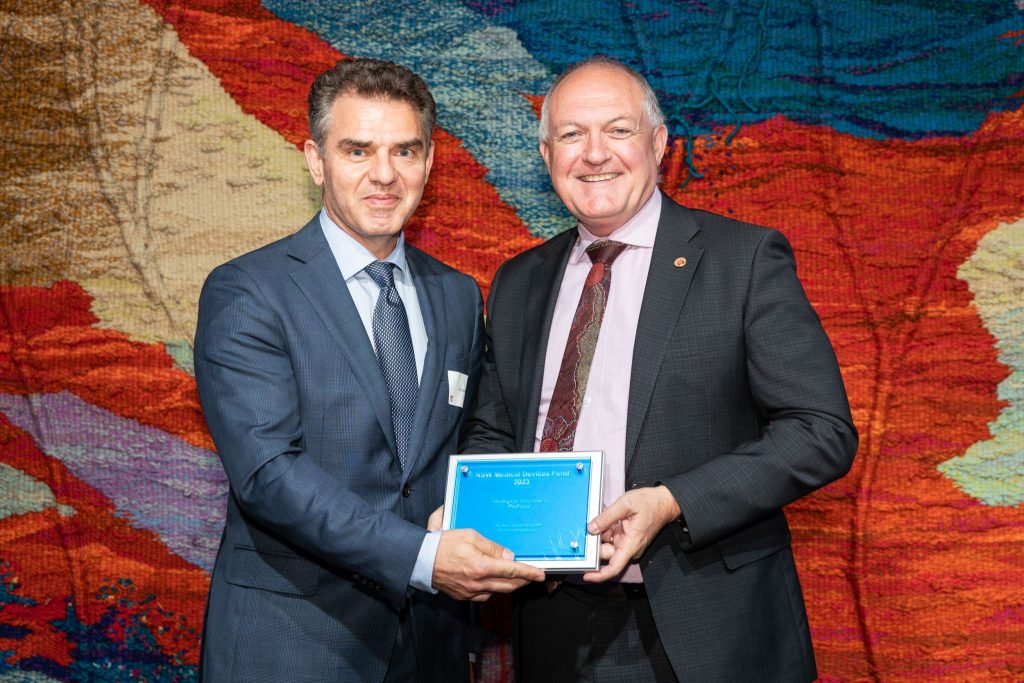Prostate cancer treatment breakthrough
A ground-breaking laser procedure which conserves the prostate gland and causes minimal side effects, is set to revolutionise treatment for men with prostate cancer.
Playing a round of golf is not something men are able to do after intensive treatment to address prostate cancer. Yet patients of a new cutting-edge laser technique, not only resume their normal lives the next day, they also report minimal side effects or no side effects at all. This impressive result is due to a decade of work by Associate Professor Celi Varol, a urologist with 20 years of experience and special expertise in robotic and laser surgery. “Though I had devised innovative techniques to improve robotic surgery to remove the prostate gland, I was also listening to my patients and taking their feedback on board,” Varol explains. “When they returned for check-ups after surgery, there was obvious relief that their cancer had been treated, but many men were also distressed about short and long-term surgery side effects, which included urinary incontinence and loss of sexual function.”

From garage start-up to manufacture
Passionate about finding a less radical and less invasive cancer treatment, Varol set up a lab in his own garage in 2013, and became founder and CEO of a med tech company called Medlogical Innovations. On nights and weekends, he worked solo to develop an alternative prostate cancer treatment that uses laser energy to accurately target only the cancerous region. To establish his home-based lab, Varol had to scrounge to find equipment that was being discarded from hospitals and medical research facilities. Over the next four years of research, his technique evolved to become the ProFocal System, which treats prostate cancer while conserving the delicate nerves and tissues surrounding the prostate gland.
The technique was so promising that in 2017, the company received support through the NSW Health Commercialisation Training Program, administered by the Office for Health and Medical Research (OHMR). “Attending this was a transformative experience that also led me to successfully apply for the Medical Devices Fund grant that same year,” says Varol. “This investment was critical in advancing the initial ‘proof of concept’ for the technique. I was then able to meet regulation requirements to seek registration by the Therapeutic Good Administration (TGA) so that a clinical trial could be conducted.”
This year Medlogical Innovations received a second OHMR grant in the 2023-2024 Medical Devices Fund cycle. This will enable the company to establish a manufacturing facility in Lane Cove, to support commercialisation of ProFocal for the Australian and international market. “I am very pleased that manufacturing will be completely home-grown, with all the components of our equipment made in our Sydney facilities,” says Varol. “The laser setup comprises a console, housing the laser generator and computer system, which is controlled via a touchscreen monitor. Each patient also requires their own single–use Laser Ablation Set, which contains a cooling system which is integrated with sensors that provide the surgeon with real-time feedback during the procedure”.

Targeted prostate conserving treatment
When Varol first began developing this novel prostate cancer approach, he used an MRI to guide the delivery of the laser. With further development of the technique, he was able to simplify his approach. The technique now utilises an ultrasound overlaid on a patient’s MRI results to guide the laser to accurately locate the cancerous tissue. The specialist can then target and eliminate cancerous tumours in the prostate gland while preserving the healthy surrounding tissue. The benefits are substantial. The ProFocal System is minimally invasive and lower risk, offering an alternative approach to whole-gland treatments for patients with early stage or minimally–invasive prostate cancer. “It accurately targets and ablates specific areas, which means the laser destroys only the cancerous tissue while leaving the rest of the prostate intact,” Varol explains. “The therapy, which takes less than an hour, is no more invasive than a prostate biopsy, which involves taking 20 or so samples of prostate tissue with little needles. In fact, though our treatment involves three or four bursts of the laser in the prostate gland, the men report that it causes less discomfort and fewer side effects than the biopsy used to diagnose prostate cancer.”
The trailblazing ProFocal technique can be carried out with mild sedation and uses a needle–guided laser system. “The special needle is guided in to place in the prostate gland,” says Varol. “At the end of that needle there are multiple sensors. The laser energy is then generated and delivered through the tip of the needle, which heats up and kills the cancer cells in the tumour in the prostate gland – but destroys only the cancerous tissue, leaving the healthy tissue untouched.” The procedure is complete in an hour or less. “In the first few days after the treatment, the men may experience a little bit of bruising and a little blood in their urine, but that’s it,” Varol explains. “On the day of the procedure, patients leave feeling minimal to no discomfort and don’t even need to take an over-the-counter painkiller.”
This is an important and encouraging result, which will substantially improve the quality of life for men being treated for prostate cancer, which is the second most common cancer in men. “One in six men will be diagnosed in their lifetime and curative treatment will be recommended in two out of three of those men,” says Varol.
Improving recovery and quality of life
Globally, almost 1.5 million men are diagnosed with prostate cancer each year. “Traditionally, whole-gland treatment options include robotic radical prostatectomy (surgical removal of the prostate gland) and radiation therapy,” says Varol. “They have been the cornerstone of managing localised disease.”
While these approaches have proven effective to address prostate cancer, they often cause significant side effects. “Robotic surgery may not seem invasive, but it can still be quite destructive to delicate nerves and tissues surrounding the prostate,” Varol points out. “After this kind of surgery there may be issues such as urinary leakage, which affects 30 to 40% of men and sexual dysfunction, which affects over 50% of men treated. These side effects can impact a man’s quality of life, so that he requires ongoing psychological support and rehabilitation to improve his pelvic floor and sexual function. Secondary corrective surgeries may also be required.”
Varol strongly believes these side effects can become a deterrent to men seeking diagnosis and treatment for prostate cancer. “A lot of men are too scared to seek out screening in case they learn they do have prostate cancer, because they are afraid of the side effects of treatment,” he says. “The condition is often diagnosed when men are at the peak of their careers or may be soon to retire and they want to reap the benefits of all their hard work.” This was exactly why Varol, who himself has a family history of prostate cancer, has been so driven to come up with an effective alternative treatment that has fewer adverse impacts on a man’s quality of life.
Pin-point laser accuracy
To find the right temperature and treatment time to remove cancerous tissue using laser, involved constant tweaks, research and development over the last decade. The result is that ProFocal can achieve millimetre–accurate delivery of laser energy to the prostate gland. As a result, surgeons have reported that they feel confident that they will not damage surrounding tissue when they place the laser right next to important sexual nerves, or areas like the bladder, sphincter or rectum.
The ProFocal System has been designed to reduce side effects and meet the three goals of the ‘Trifecta concept’ which aims for men to be cured, continent and potent after their prostate cancer treatment. A phase one trial conducted at Nepean Public Hospital and involving 100 patients, has shown that the technique is extremely successful. “By targeting the cancer itself and leaving the organ intact, we have found that patients experience next to no side effects,” says Varol. “The men treated in the trial reported zero urinary and bowel incontinence and minimal impact on sexual function, which has been a fantastic result.”
The laser treatment also shows a success rate of around 90% after just one session. “Some patients may need to have a second treatment, but they obviously prefer a second laser therapy treatment rather than an operation to remove their prostate gland” adds Varol, who hopes the treatment may be available to men in 2024, pending appropriate TGA approvals.
Due to its ability to deliver extremely precise ablative treatment, there may also be other commercial applications for ProFocal in the future. According to Varol, “We have had expressions of interest to adopt the technology for lung and spinal applications, subject to future product development and clinical trials.”
Updated 2 years ago